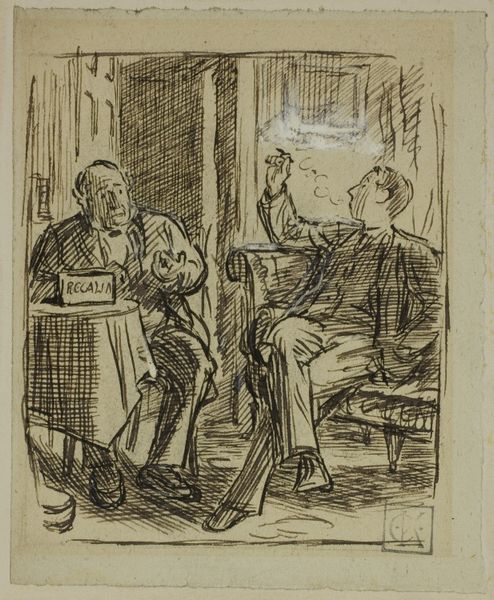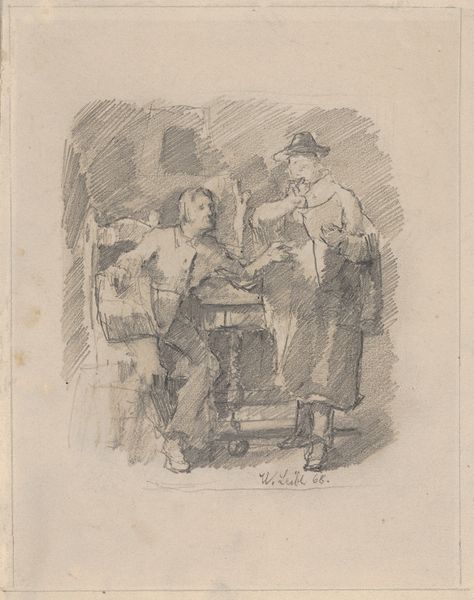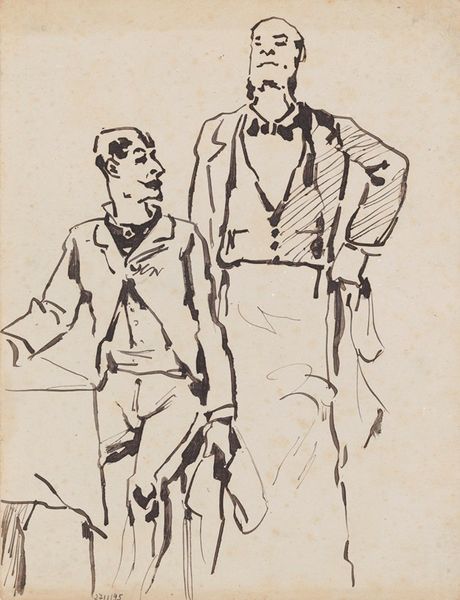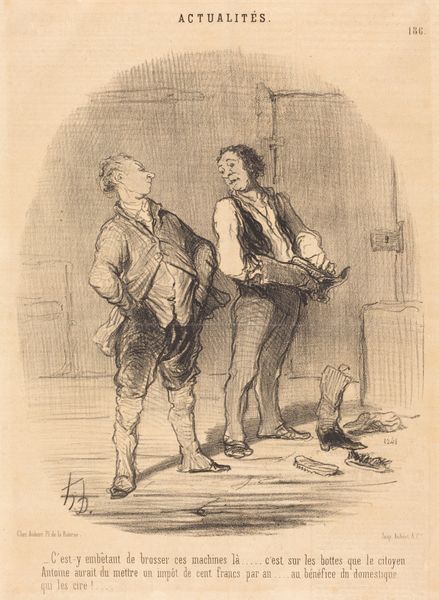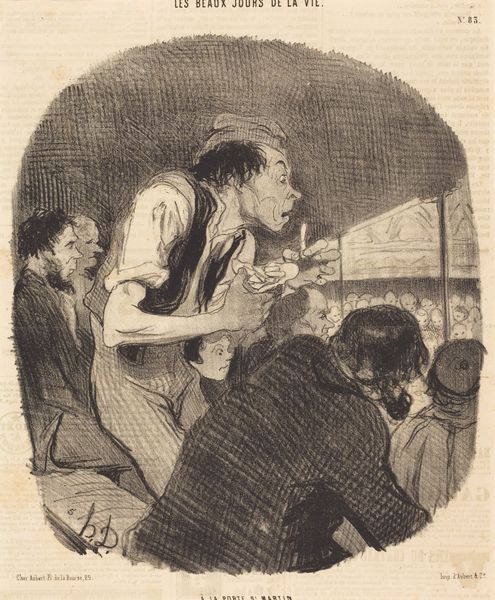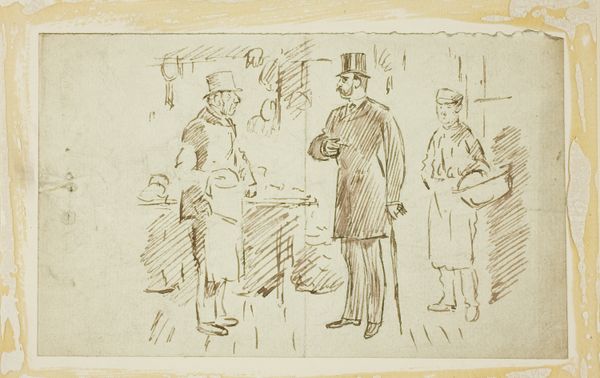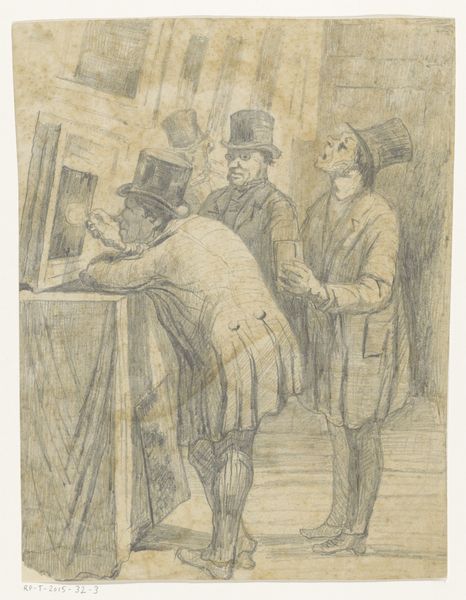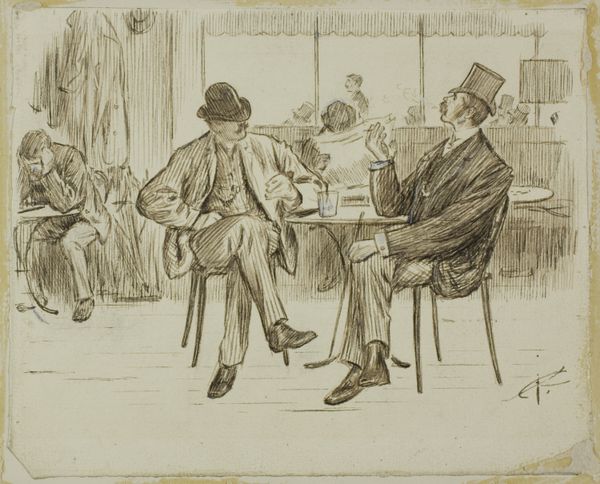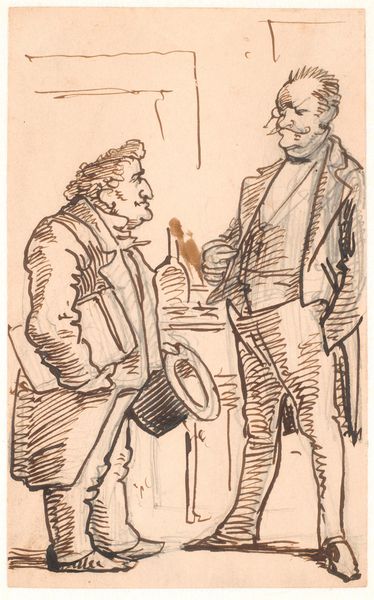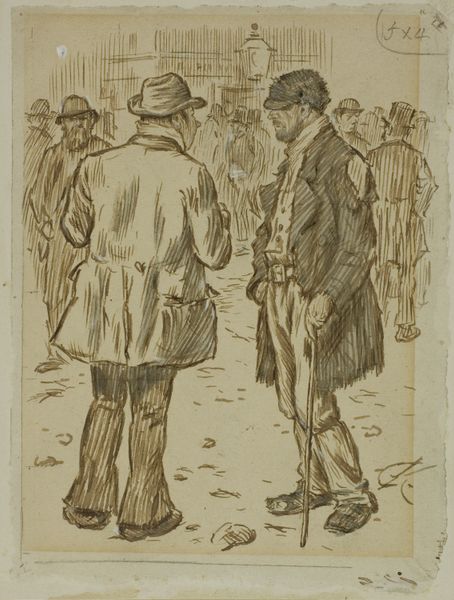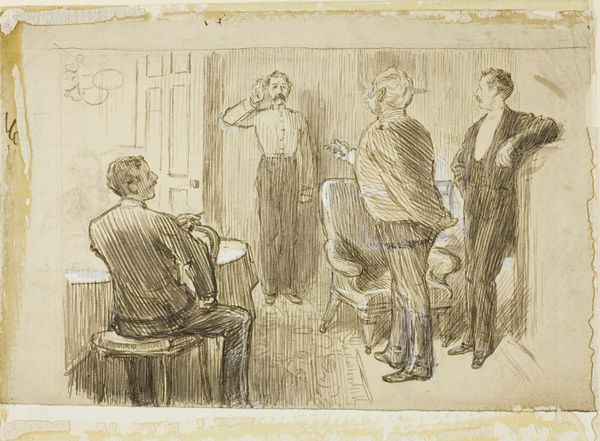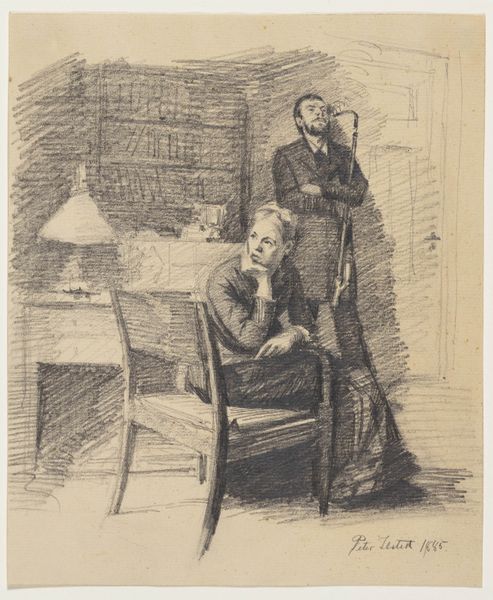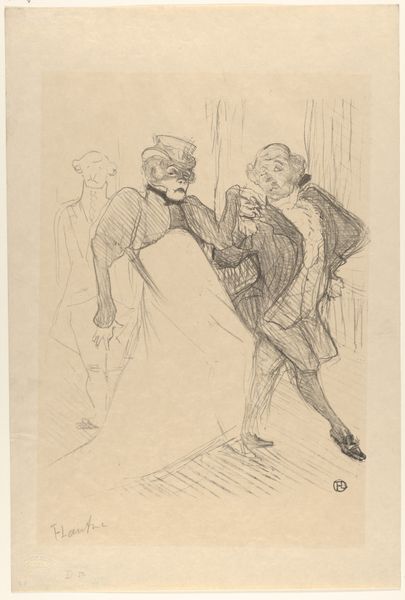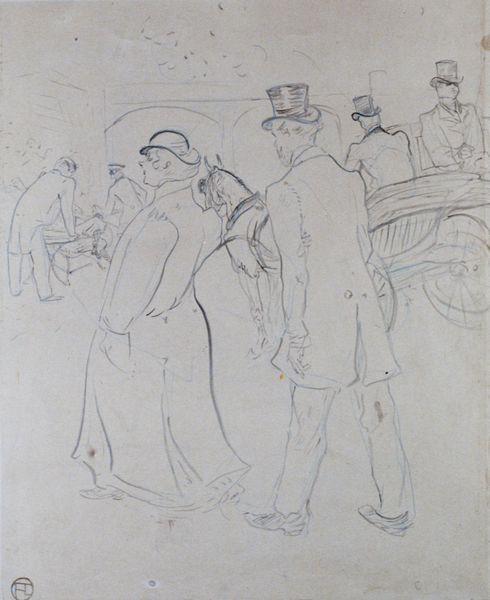
drawing, print, paper, ink, pen
#
portrait
#
drawing
#
narrative-art
# print
#
figuration
#
paper
#
ink
#
pen
#
genre-painting
Dimensions: 210 × 180 mm
Copyright: Public Domain
Editor: Here we have Charles Samuel Keene’s pen and ink drawing, "For the Third Time of Asking," created sometime between 1870 and 1891. It has this very immediate, sketched quality, yet the expressions on the figures' faces feel quite specific. What do you see in this piece, particularly regarding the social dynamic between the figures? Curator: The scene presents a very clear hierarchy, doesn't it? We see a younger man, hat in hand, presumably requesting something from the older, seated man, who seems to hold some authority. Consider the power dynamics at play here. The younger man is, in essence, petitioning. How might this reflect Victorian England's societal structures? Think about class, access, and the limited social mobility of the era. Editor: It feels like there’s an inherent tension – the young man needs something, and the older man seems reluctant or perhaps annoyed. It's interesting that you highlight class structures, since their clothes position the men in specific levels of society. The man who's sitting looks pretty successful and busy. What do you notice about the depiction of labor here? Curator: Precisely. Keene's use of line suggests not only a physical space but a space charged with unequal power. Look at how the older man is surrounded by books and papers; knowledge, commerce, and control are visually represented. The younger man’s posture communicates deference and vulnerability. The title suggests repeated attempts – a narrative of potential frustration or even systemic obstacles. How might feminist or postcolonial theory inform our understanding of this dynamic? Could this repeated asking be a metaphor for something broader than just a simple request? Editor: That's a fascinating angle I hadn't considered! Thinking about it that way shifts the drawing from a simple genre scene to a commentary on the barriers some people face. I like the idea that this artwork can act as a mirror of broader systemic injustices. Curator: And isn't that the power of art? To hold a mirror to society, inviting us to question, analyze, and hopefully, advocate for change. It shows a glimpse into how class functions in a visual culture.
Comments
No comments
Be the first to comment and join the conversation on the ultimate creative platform.
